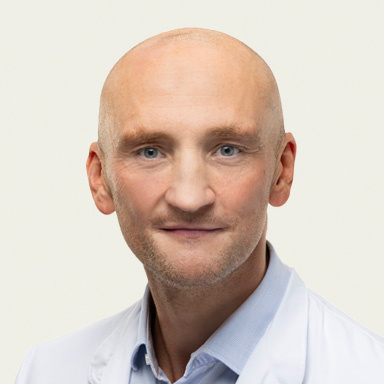Cholesterol plays an important role in the body when it comes to cell health and forms the basis for many messenger substances and vitamins. In order for cholesterol to perform its functions, it needs to be transported to its destination via the bloodstream. Too much cholesterol in the blood is referred to in the medical world as hypercholesterolaemia. This condition can lead to the formation or progression of deposits on the arterial walls (atherosclerosis, commonly referred to as ‘arteriosclerosis’, which, however, is more of an overarching term for vessel wall thickenings of any type). The consequences can be serious cardiovascular diseases such as heart attack, stroke or, for example, window shopper’s disease (PAOD).
The body meets its cholesterol requirement through its own production in the liver and through food intake. Foods that are particularly high in cholesterol include eggs and animal-based foods with a high fat content (e.g. butter, cheese, sausages).
Cholesterol is transported in the blood in various forms:
- as LDL cholesterol (low-density lipoprotein) and VLDL cholesterol (very low-density lipoprotein), which transport cholesterol to target tissues outside the liver. LDL cholesterol and VLDL cholesterol have a high fat content (total fat content: 80–92%) and promote the depositing of cholesterol on the vessel walls.
- as HDL cholesterol (high-density lipoprotein), which transports cholesterol back to the liver and thus performs a ‘cleansing function’, as the cholesterol can be reused from here or excreted with bile. HDL cholesterol has a low fat content (total fat content: approx. 50%) and counteracts atherosclerosis through the functions above.
High blood cholesterol has many causes. A distinction can generally be made between congenital and acquired causes of hypercholesterolaemia. The most common inherited form is primary familial hypercholesterolaemia (FH). Those affected often have significantly elevated cholesterol levels in their blood at a young age. The earlier onset and the longer period during which these individuals are exposed to high levels of LDL cholesterol significantly increases the risk of atherosclerosis and its complications.
However, the majority of hypercholesterolaemia cases are due to acquired causes: An unhealthy lifestyle with excess weight, diabetes mellitus, lack of exercise and a high-fat and cholesterol diet are its main risk factors. At the same time, smoking greatly increases the risk of atherosclerosis.
Hypercholesterolaemia is primarily diagnosed by measuring the level of LDL cholesterol in the blood. Any treatment aims at lowering LDL cholesterol and helps to avoid or reduce consequential damage, such as atherosclerosis.
What can you do to lower your LDL cholesterol?
Aside from making lifestyle and dietary changes, and performing regular physical exercise, cholesterol-lowering medications (e.g. statins) are the most important pillar of therapy. When it comes to nutrition, it is important to consume foods containing cholesterol in moderation. Diet types such as a meat-reduced Mediterranean diet have a beneficial effect on both cholesterol metabolism and the above complications. These mainly consist of wholegrain products, pulses, a wide variety of vegetables and fruits, and high levels of unsaturated fats (e.g. olive and rapeseed oil, nuts, seeds or kernels). Limiting consumption of light-coloured breads, white flour products, sausages, deep-fried snacks and red meat can also have a positive effect on blood lipid levels, while physical activity also has an effect on the atherogenicity of LDL cholesterol. As a whole, the interplay of the various preventive measures is complex.
Dedicated prevention consultations and, if necessary, nutritional advice are available to help you work out your current situation and obtain recommendations for treatment.
If the arteries have already been narrowed and blocked as a result of vascular damage, a range of different interventional methods are available to reopen them. Depending on the vascular region and progression, these can be treated by angiologists, surgeons or cardiologists. More information on the different options can be found, for example, in the chapters on endarterectomy, coronary surgery and balloon dilation.
Centres 10
-
Outpatient Clinic Permanence
Bümplizstrasse 83
3018 Bern

